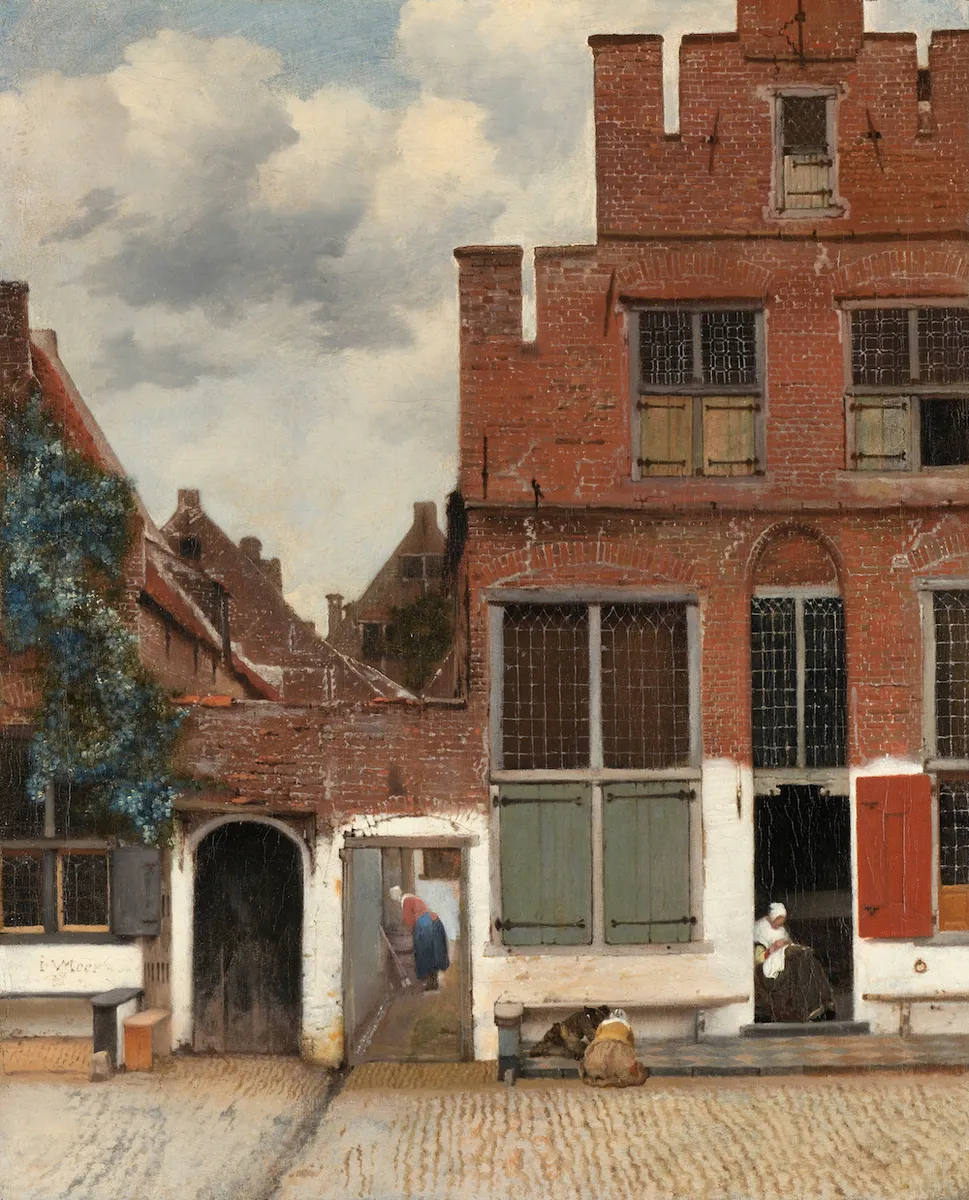An Expert Has Figured Out the Real-Life Location of Vermeer’s “Little Street” Painting
The painter probably had a personal connection with the house that figures prominently in the painting.
/https://tf-cmsv2-smithsonianmag-media.s3.amazonaws.com/filer/88/69/8869918a-1bca-45f2-a005-db10f77b1311/straatje_oud_en_nieuw.jpg)
Dutch painter Johannes Vermeer's work is marked by the delicate light that touches his subjects. Yet most of Vermeer's work takes place inside, with light streaming through a window. Few of his paintings venture past the threshold of a house. Now careful research has uncovered where exactly Vermeer painted one of these works.
The painting "Het Straatje" or "The Little Street" depicts a mundane 17th-century street scene in Vermeer's home of Delft, Netherlands, but with the careful attention to detail and light that characterizes his individual technique. While the original buildings Vermeer painted are long gone, that hasn’t stopped historians from wondering whether he painted a real or composite street. Now Frans Grijzenhout, a professor of art history at Amsterdam University, has put a rest to the conversation, writes Peter Walker for the Guardian.
Grijzenhout pinpointed the little street to the stretch in front of present-day No. 40 and 42 Vlamingstraat, Delft. Over the years, other addresses had been suggested, reports a press release from Rijksmuseum in Amsterdam, which is now showing an exhibition based on the finding. Grijzenhout consulted a historical document, De legged van het deepen der watered binned de star Delft (The ledger of the dredging of the canals in the town of Delft), which was published in 1667, just a decade after the painting was created. The ledger includes a calculation of how much tax each house owner needed to pay, and records the width of each building and nearby passageways.
Two houses, about 20.6-feet wide with adjacent passageways that measured just under four-feet wide, proved to be a match for the houses and paths in the painting. Those buildings have since been replaced — though the passageways remain —they were there when Vermeer would have painted them. “There was no other place in Delft during that time where this constellation was found,” the press release reports.

Armed with the address, the experts can now fill in a few more details about this little street in Delft. The house on the right in the painting once belonged to Vermeer’s aunt, Ariaentgen Claes van der Minne, who sold tripe. The small passageway alongside her house was therefore called Penspoort or Tripe Gate. “We also know that Vermeer’s mother and sister lived on the same canal, diagonally opposite,” the museum’s press release notes. “It is therefore likely that Johannes Vermeer knew the house well and that there were personal memories associated with it.”
Perhaps the small children absorbed in some game by the bench in front of the house in the painting were two of the five supported by his widowed aunt’s sale of tripe. Could the elderly woman bent over her sewing be Ariaentgen Claes van der Minne herself? Far from taking away from the intriguing glimpse of everyday life, the new finding adds to the allure of the painting. If Vermeer had a personal connection to the house and its inhabitants, that may explain why he chose to abandon the interior to paint this particular little street outside.